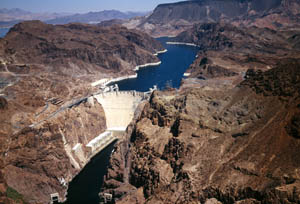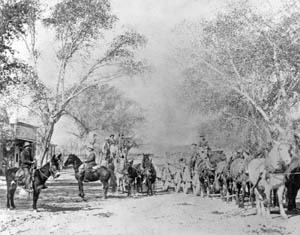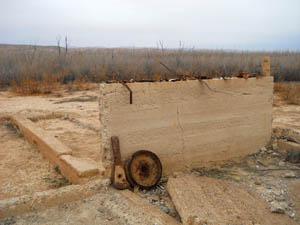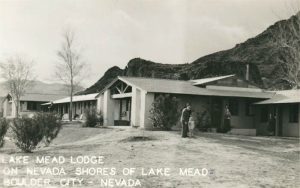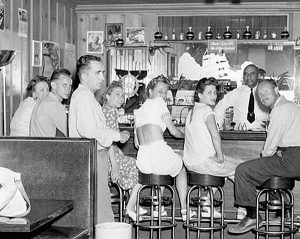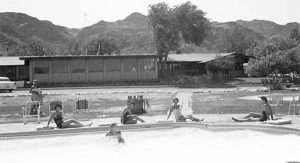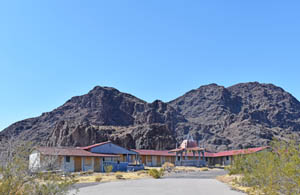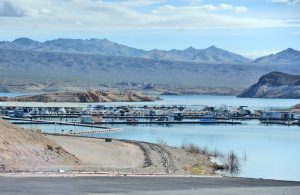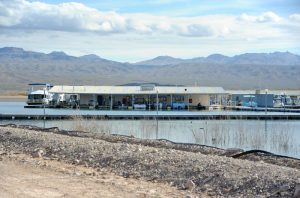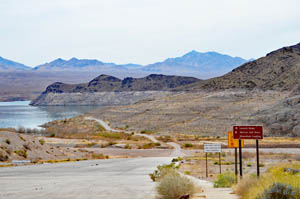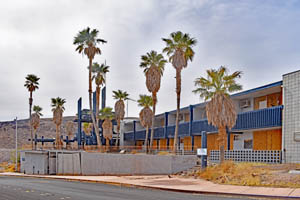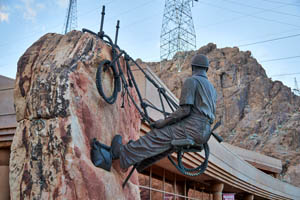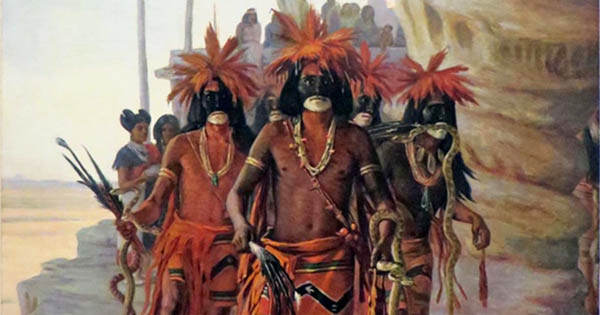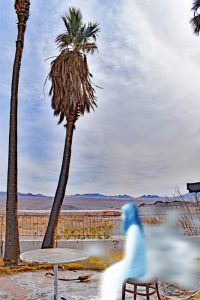Lake Mead National Recreation Area, America’s first national recreation area, allows visitors to swim, boat, hike, cycle, camp, and fish. With striking landscapes and brilliant blue waters, the nation’s first national recreation area spreads across 1.5 million acres of mountains, canyons, valleys, and two vast lakes — Lake Mead in Nevada and Lake Mohave in Arizona.
President Calvin Coolidge signed the authorization to build Hoover Dam in 1928 to provide electricity and water for desert city residents. The structure is 70 stories tall and 660 feet thick and is so well engineered that it’s said it would outlast the water supply in the largest manmade reservoir in the United States. 5,000 workers completed the entire job in just five years.
The dam also split 140 miles of shoreline between Lake Mead and Lake Mohave. It was first called the Boulder Dam Recreation Area in 1936.
When full, it is the largest reservoir in the United States. However, it has not been full since 1983. The last time the lake was near a “full pool” was in 2000 at 1,214 feet. The full pool, or the highest the lake can rise, is 1,250 feet. With greater demand for water and drought in the last several decades, many scientists predict it will probably never be full again. This has caused several recreational facilities to be moved or closed.
Lake Mead has long been the maker of ghosts – not necessarily the kind that goes “boo” at night, but in lost cities, places, people, buildings, and the lake itself.
Pueblo Grande – The Lost City
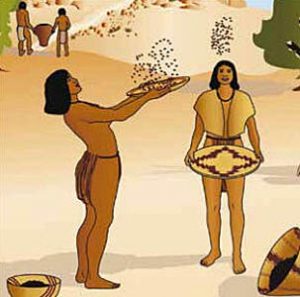
Basket Makers
The original inhabitants of this area were the Basketmaker people in about 300 A.D., though the site shows signs of human occupation as early as 8000 BC. The Ancient Puebloans, also known as the Anasazi, later migrated here and stayed until about 1150 A.D.
These natives developed and flourished in the Moapa Valley, paralleling the well-known Puebloan cultures of the Southwest in the Four Corners area of Utah, Colorado, New Mexico, and Arizona.
These people built a pueblo of above-ground structures that were more than simple one-room houses. Instead, they consisted of 20-100 rooms. Now known as Pueblo Grande de Nevada and often called the “Lost City,” its inhabitants left hundreds of years ago.
In 1827, Jedediah Smith found various artifacts while exploring the area. Many years later, more people came upon the site, but little interest was shown until Overton, Nevada, residents stumbled across the ruins. Archaeologists first excavated it in 1924 and found walls, tools, weapons, food, and even skeletal remains.
As the Hoover Dam was under construction and knowing that Lake Mead would eventually cover the Lost City, a rush was made to recover as much information as possible from the doomed sites.
The Lost City Museum, built by the National Park Service in 1935, exhibits artifacts from Pueblo Grande de Nevada.
Today, the pueblo’s most developed sections are partially submerged under the Overton arm of Lake Mead, five miles south of Overton. The site was listed on the National Register of Historic Places in October 1982.
St. Thomas Ghost Town
At the same time, the town of St. Thomas, Nevada, was just about to be submerged beneath the lake. This community was founded by Mormon settlers who thought they were in Utah when they arrived at the Muddy and Virgin Rivers’ fertile valley in 1865. Several years later, Nevada state authorities demanded they pay five years of back taxes. The Mormons refused and abandoned the town, burning down their houses, except for one family.
Then in the 1880s, new settlers began farming the rich soil, and St. Thomas returned to life. Its peak population was around 500.
President Calvin Coolidge signed the authorization for Hoover Dam’s building in 1928, which would eventually flood the town. The residents were bought out and given seven years to leave before the town started to flood, sinking their city 70 feet below the lake.
For years, the town’s ruins were buried beneath Lake Mead’s waters; however, St. Thomas has emerged from a watery grave because of drought in the past decades. After all these years, the schoolhouse steps and a crumbling chimney can still be seen. Today, the ghost town has become a tourist attraction and an occasional reunion site for former residents’ descendants.
The issues facing Lake Mead, formed by Hoover Dam in 1935, are caused by water from the Colorado River being overallocated. More water is coming out than in, with much allocated to users in California, Arizona, and Las Vegas, Nevada.
This has resulted in a permanent white bathtub ring 150 feet above the lake, a large dam, and decaying infrastructure throughout Lake Mead National Recreation Area.
Mead Lodge
One of the “ghosts” created by the lower water levels was Mead Lodge. The lodging facility was first called the Hualapai Lodge in 1941. The Lodge was the first hotel on Lake Mead and one of the first tourist facilities constructed inside the park. Located along Boulder Beach, the site was chosen due to its proximity to a long sandy beach, boat launch, and the growing town of Las Vegas. Three large lodge units contained Spanish-style architectural elements; each guest room had heating and cooling units.
The United States entered World War II just a few months later, and tourism increased substantially during the war years. However, locals patronized the Lodge — gathering nightly to dine, enjoy a drink, and dance at the area’s only bar, as alcohol sales were banned in Boulder City. Established during Prohibition, Boulder City banned alcohol and gambling from the city’s outset. Though alcohol was finally allowed in 1969, it is only one of two cities in the state that continue to ban gambling.
The facility was renamed Lake Mead Lodge in 1945 to better reflect its lakeside location. In 1848, the lodge management changed, and the new operator constructed a large swimming pool, a small wading pool, and a fourth lodge building to better serve the growing number of tourists visiting Lake Mead.
Tourism to Southern Nevada grew continually in the 1950s and 1960s, and new hotels and other tourist facilities sprang up around the area. During this period, Lake Mead continued to gain popularity, with over 2,000,000 visitors coming to Boulder Beach each year in the 1950s. The National Park System began to upgrade the recreation area and many other parks across the nation within no time. Soon, new boat ramps, campgrounds, picnic areas, ranger stations, visitor centers, and employee housing were built.
Another management change was made in 1961, and the new company constructed the world’s largest floating restaurant at the Lake Mead Marina. It became a favored destination for Las Vegas celebrities such as Don Rickles, Andy Williams, and Harry Belafonte, who regularly chartered boats from the marina.
The lodge’s management again changed hands in the 1970s, and more minor modifications were made to the grounds, including adding gazebos, rope fences, lamp posts, and palm trees.
The lodge continued to do well into the 1980s when high-quality tourist accommodations became increasingly available in nearby Henderson, Las Vegas, and Boulder City. Soon, Lake Mead Lodge’s popularity declined and continued to do so as the water levels fell, creating a very conspicuous white “bathtub ring” of mineral deposits around its periphery.
Due to the continued lower lake levels, the Lake Mead Marina moved three miles to the south in 2008. Isolating the Lodge from the marina, the number of guests dropped dramatically. After over 65 years of serving the needs of tourists, Lake Mead Lodge was closed in 2009.
The Lodge was then used to accommodate park personnel but was later abandoned. The National Park Service looked into the possibility that the lodge would be eligible for the National Register of Historic Places. However, studies found that the building did not meet construction, safety, and accessibility codes and had suffered from decades of deferred maintenance. In 2012 a decision was made to remove the buildings and restore the grounds to the natural desert. However, as of this writing, the building stands, decaying in the desert sun, surrounded by an overgrown and neglected landscape.
Echo Bay
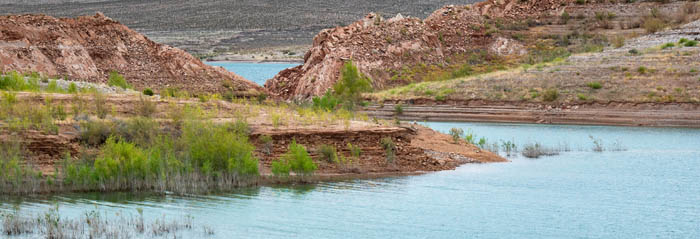
Cove at Echo Bay, Lake Mead, Nevada by the National Park Service, 2012.
In 1962, a 54-room hotel and restaurant were built on a hill overlooking the Overton Arm’s west side at Echo Bay. Considering what visitors might expect to see near the Florida coast, most rooms had private balconies or patios, many of which overlooked the lake. First called the Echo Bay Resort, it also featured the Tail O’ The Whale restaurant and cocktail lounge with nautical decor and large windows offering lake views. The hotel also had a 2,500-square-foot conference room on the second floor.
The marina operated many services during this time, including a 365-slip marina, fuel dock, lake, land-based fuel, dry boat storage, and minor boat repair. It also rented all types of boats and personal watercraft, including many houseboats, some up to 56 feet long. The full-service marina was a booming resort destination, and there was a long waiting list of people who wanted to rent boat slips at Echo Bay. Sometimes, boats lined up for a mile, waiting their turn to launch at the short ramp.
The boat ramp was located next to the hotel, and a floating walkway allowed visitors to make their way to the marina easily. A concrete walkway also allowed people to go directly to the lake, where they could swim or float on their inner tubes and rafts. The campground also had a good swimming area where the water was calm and clear, with 20 or 30 feet visibility. Many called the area a fisherman’s paradise, where people could easily fish from the banks. The site even had an airstrip.
Below the hotel, houseboats once anchored closely together, enjoying the amenities of the lake and restaurant. A few partakers included Ann Margaret and Pierre Omidyar, the founder of eBay. Echo Bay is credited for being the inspiration for the name of the online auction marketplace. It is said that Omidyar wanted to call the website Echo Bay, but when the domain name was already taken, he named it eBay instead.
But over the years, as the lake receded, the water became farther and farther from the hotel and campground. Three times, the floating walkway to the marina was relocated farther downhill due to the retreating waterline. The Park Service continued to pour more concrete, extending the boat ramp to one-third mile. The marina was also pushed farther out into the lake, requiring constant re-engineering of the facilities.
In a last-ditch effort to increase visitors and revenue, the management company debuted floatels at the Echo Bay Marina in 2011. These 67-foot floatels remained securely docked, were climate-controlled, and included a spacious living area, a fully equipped kitchen, four bedrooms and a sleeper sofa, a TV/DVD player, an outdoor barbecue grill, and a top-level sun deck with a wet bar and hot tub.
But it wouldn’t be enough. With declining reservation and visitor numbers, the marina, restaurant, and hotel closed in February 2013.
Soon, the hotel/restaurant building and the abandoned marina were vandalized. Later, the marina facilities were removed, and the Park Service plowed a mile-long dirt road from the hotel to access the remaining lake. Today, the one-third-mile boat ramp terminates far from the present lakeshore in a sandy wash. The old hotel still stands deteriorating in the desert. The airstrip is riveted with cracks, there are no active airport operations, and sometimes cattle can be seen roaming along the strip.
Echo Bay still offers some services, including an RV park, trailer village, convenience store, boat ramp, and land-based fuel station.
Other changes over the years include relocating the Las Vegas Bay Marina in 2002. The Overton Marina closed in 2010, and several other boat launch ramps were also closed.
Lower Water Levels
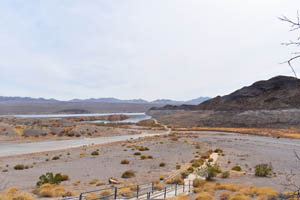
This sidewalk from the Echo Bay Hotel once allowed visitors to reach the water. Now, the water is far away, by Kathy Alexander.
Unfortunately, the future of Lake Mead remains grim. Growing demand, relentless shortage, and climate variability create an annual water deficit of almost one million acre-feet in the Colorado River system. Both Lake Powell and Lake Mead reservoirs are half-empty, and scientists predict they will probably never fill again.
In January 2021, the U.S. Bureau of Reclamation released a study showing that the water level at Lake Mead is closely monitored as it is nearing a mark that could cause a federally declared water shortage. The study placed the water level at 1,085 feet. A shortage condition could be declared if Lake Mead’s elevation is projected to be below 1,075 feet.
Under a shortage condition, water allotments to Arizona would be reduced by 320,000 acre-feet, Nevada by 13,000 acre-feet, and Mexico by 50,000 acre-feet. Arizona, Nevada, and Mexico agreed to cuts under a drought contingency plan signed in 2019. Previous stress test models suggested a 32% chance that Lake Mead will fall below 1,075 feet by 2022 and a 77% chance by 2025, as reported by the Associated Press. One of the first states hit with cutbacks, Arizona could lose about half its Colorado River water if a shortage is declared.
Another significant issue is that the area’s population depends on the Hoover Dam for electricity. In the past decades, the lower lake levels necessary to generate electricity have required that the dam be retrofitted with wide-head turbines designed to work efficiently at lower levels. However, if water levels continue to drop, Hoover Dam would cease generating electricity when the water level falls below 950 feet.
Today, Colorado River users hope regional efforts to conserve water pay off and leave enough of their unused supplies in the lake to stave off a shortage declaration, but that remains to be seen.
Do any spectral characters haunt the lake beyond the “ghosts” left behind by the lower lake levels? Some say “yes.”
Real Ghosts at Lake Mead
Some of the oldest ghosts are said to be those of Native Americans who once lived on the Colorado River in this area. Allegedly, they still roam the land to protect it and are sometimes angry because their culture was destroyed and their land was taken over. Campers have reported hearing wailing voices carried by desert winds.
Another maker of ghosts is Boulder Dam. During the Depression era, the building of the dam put thousands of men back to work, but it was a deadly place to earn a paycheck. Some 96 men lost their lives during the dam’s building, including only those who died on site. This figure did not include others who later died at a hospital or elsewhere. The number also only includes “industrial accidents,” meaning that other men who may have died on the job from heat or other issues are not included. It would not be surprising if some of these men who died on the job might continue to haunt the area. Some visitors report paranormal activity both in and around the dam. Visitors who have toured the Dam’s Power Plant have heard footsteps echoing in long, empty corridors. Others claim to have seen apparitions crying out or weeping, and some have heard disembodied voices. One of these ghosts is a man dressed in old-fashioned work clothes who instantly vanishes when approached.
In March 2017, Outside magazine named Lake Mead the deadliest park in America. Pulling records from January 2006 to September 2016, the magazine determined that Lake Mead had more deaths than any other National Park. At that time, Lake Mead had more than 1,000 deaths, excluding suicides. D drowning was the number one cause of death, with motor vehicle crashes and falls following. The park also had the most homicides of any national park. Some of these souls probably continue to haunt the park.
Despite its lower levels, Lake Mead remains a popular destination for families and travelers who continue to come for vacation, recreation, and sightseeing.
©Kathy Alexander/Legends of America, updated March 2024.
Also See:
Lake Mead Recreation Area Photo Gallery
National Parks, Monuments & Historic Sites
Pueblo Grande de Nevada – The Lost City
Sources:
Americas Best History
KNTV News
National Park Service
swaviator.com
Thomas J. Elpel
Werewoofs.com
Wikipedia – Lake Mead
Wikipedia – Lost City


